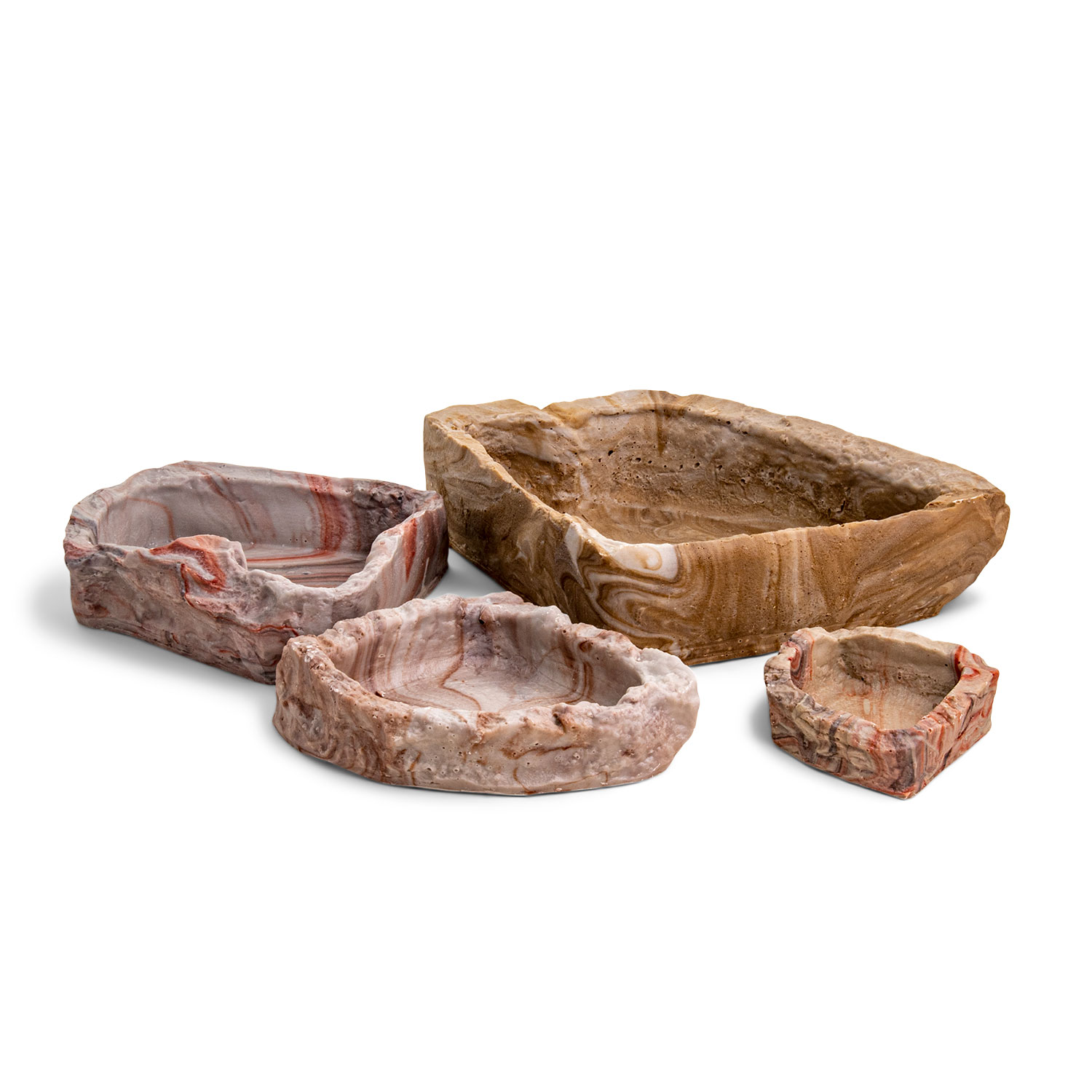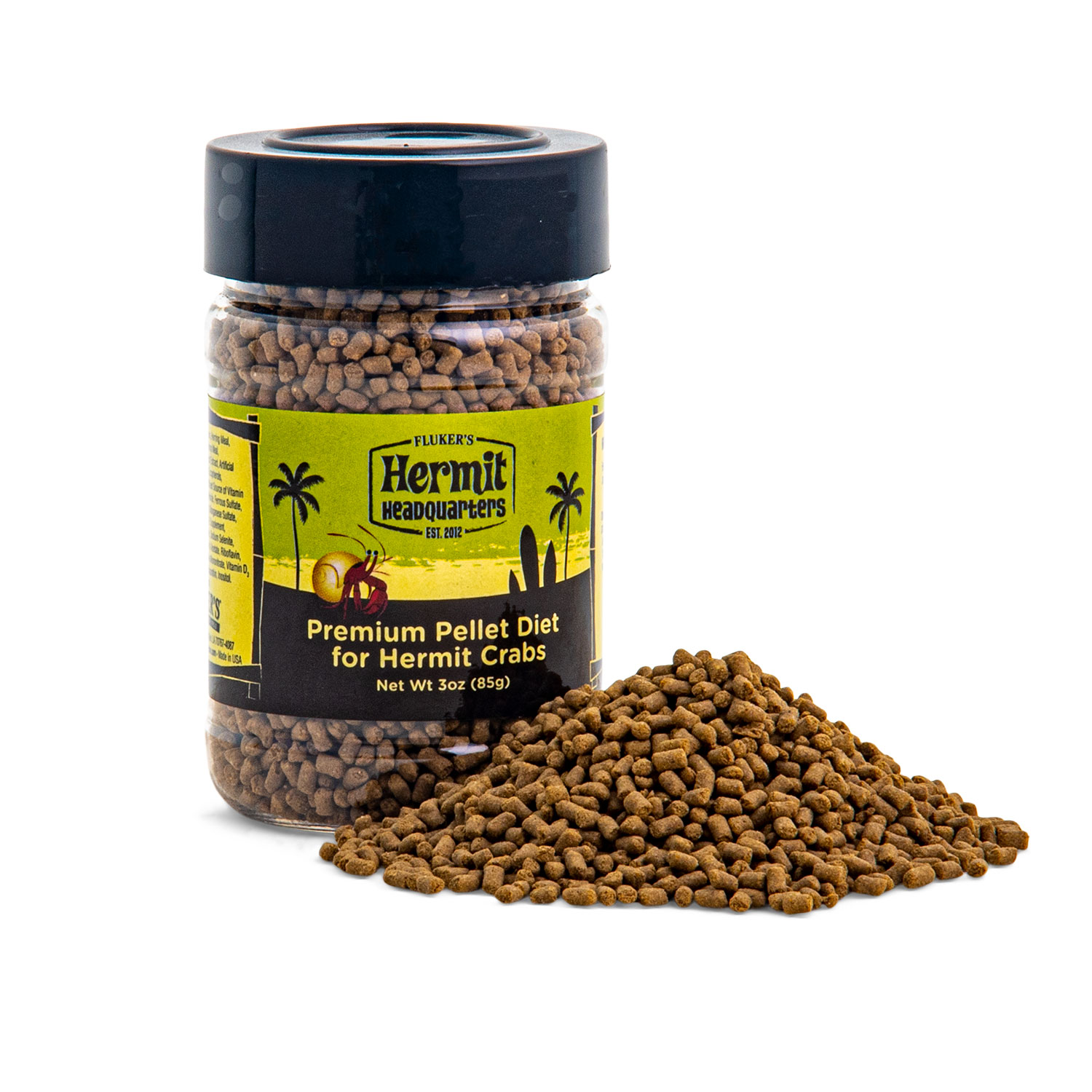How to Set Up Your Hermit Crab Tank?
Posted by Dr. Mark Mitchell, Professor of Zoological Medicine at LSU School of Veterinary Medicine and The Fluker's Team on Jul 3rd 2024
In this tutorial, we are going to talk about How to Care for your Hermit Crabs. Hermit Crabs are very friendly and social animals. As with any pet, it is important to get all your supplies prior to bringing your pet home.
These animals live an exceptionally long time. When properly cared for, the average life span of a Hermit Crab is 10 years. We want to make sure they have the best life they can in captivity. So, when you bring your Hermit Crabs home, do not just bring one, bring two, or a small group of them to ensure they have the best quality of life.
Enclosure
- Begin with a 10-gallon aquarium or a similar-sized plastic container. This will house at least two crabs.
- Avoid placing the enclosure in direct sunlight or drafty areas, as this can impact the hermit crabs' body temperature. Being exotherms, hermit crabs adjust their body temperature based on their environment. Unlike humans, we can control our own temperature.
- Add a screen cover to put on the top of the enclosure. This helps to ensure the hermit crabs do not get out. Moms do not like hermit crabs getting out!
Substrate
4.Set up the substrate next. Substrate is crucial for hermit crabs because they are natural burrowers. They like to get into the sand itself.
Make sure to add plenty of sand to the enclosure for the hermit crab to molt properly. The molting process is an incredibly stressful process for the crab. The proper amount of substrate is 3x as deep as the highest hermit crab shell.
We recommend Hermit Crab Sand. This sand is a blend of premium sand, coconut fiber, and probiotics. These ingredients are essential in the health of our hermit crab.
Some people use calcium carbonate sand. However, it can be hard and stick to the hermit crab's legs and abdomen. This can make it difficult for them to move around.
5.Once you put the substrate in, spread it out, and again, make sure it is deep enough for your hermit crabs.
Food and Water Bowls
6.You need a minimum of three bowls; one for the food and two for the water. We recommend Fluker’s Rock Corner Water Bowl as well as the Fluker’s Hermit Crab Lagoon.
It is important that the water bowls are deep enough that the hermit crabs can completely submerge themselves into the water bowl. They will be able to get themselves out because we will talk about using sponges later.
7.For the freshwater corner bowl, place it right into the corner of the habitat. Fill it with water. It is important to de-chlorinate the tap water with a conditioner.
We recommend the Fluker’s Fresh Water Conditioner. Add 4 drops to 1 cup. Chlorine can be very toxic for hermit crabs, so it is important we get rid of it.
8.We also recommend for our deep Lagoon bowl using a conditioner. For this, we recommend Fluker’s Salt Water Concentrated Conditioner. Not only does it de-chlorinate the water, but it adds important nutrients and salt as well. For this, you can add one teaspoon for every 8oz (about 236.59 ml) of water.
9.Salt is essential for these animals because they come from a marine environment. The salt helps with the movement of fluid in and out of hermit crabs. To help them with that, we recommend two products:
- Saltwater Conditioner and Concentrate- this product should be used any time you are using tap water to help remove Chlorine and Chloramine because they are highly toxic to our hermit crabs. In addition to removing those things, they add salt and essential minerals, such as calcium, that are important for the long-term health of our hermit crabs
- Salt Concentrate in Solid Form- Can be used in deep water lagoon for soaking bath. This product does not dechlorinate, so it will be best used with bottled (filtered) water.
10.For a deeper water dish, we recommend using a sponge. These sponges contain chitin and extra nutrients, things like shells the crabs will eat and get some extra calcium from. It also allows easy mobility in and out of their water bowls.
11.For the food, we recommend using the Fluker’s Rock Feeding dish. This is a shallower bowl the hermit crab can use without having to put forth so much effort.
Accessories
Hermit crabs are quite active. While they are active, they like to burrow, and they like to climb. They really like to climb! In doing so, we want to make sure we have the most appropriate equipment for them.
12.We recommend Fluker’s Critter Cavern Half Log as well as the Habi-Caves, driftwood, and live moss. You can place the driftwood anywhere in the enclosure and it will help with the activity of the hermit crab. The Moss can also be placed in and wetted down. The hermit crabs will chew on that, and it helps provide them with trace elements and small bugs.
13.Another product we recommend is Fluker’s Castle Crib. It combines a basking platform as well as a cave and another water source. You can place it inside the cage and choose to make it either a freshwater or a saltwater bath. In doing so, do not forget to add an extra sponge to those extra accessories.
14.Fluker's Cattapa Leaves are good for the bottom of the enclosure. They give crabs something to burrow under and make them feel more secure. It is also a high form of cellulose, so they will use it as part of their diet.
15.Finally, our hermit crabs can live in their new home!
16.Providing them with growth shells, such as Fluker’s Hermit Crab Growth Shells, is important. These are larger than the current size of the hermit crabs. When hermit crabs shed their old shells, they search for slightly larger ones. It's important to provide them with new shells during this time because they are fragile.
Temperature and Humidity
Temperature and Humidity are important for our hermit crabs because they are exotherms. Being exotherms, they regulate temperature from their environment. These animals strongly prefer their environmental temperature between about 72 and 82 degrees. There are a couple of different ways we can provide them with the proper temperature:
- Under Tank Heater
- Incandescent Light Source and a Clamp Lamp.
17.We recommend if you are using an under-tank heater, the Fluker’s Hermit Crab Heat Mat. You can place this heat mat directly underneath the enclosure and plug it into the wall. This will provide a certain point source of temperature for the temperature to radiate from that point.
According to Dr. Mark Mitchell, Professor of Zoological Medicine at Louisiana State University School of Veterinary Medicine, “My preference is to go ahead and use a clamp lamp because this really mimics the sun itself and the clamp lamp can be put directly on top of the enclosure and provide some radiant heat.”
18.Fluker’s has a couple several types of bulbs:
- Daylight Bulb- it will just generate heat and light
- Black Lamp- generates heat and allows you to view your hermit crabs during their most active time of the day.
19.Humidity is also important for our Hermit Crabs. Keeping moisture levels high is important to help them breathe properly and avoid drying out. We always like our humidity to be somewhere between 60-80 percent for the hermit crabs.
To keep proper humidity levels, use a mister like Fluker's Repta Sprayer with tap water. Remember we talked about the fresh water de-chlorinator earlier for the water bowl, you can also use it here. Mix four drops per eight ounces of water. Spray liberally within the enclosure and depending on where you live, you will want to check that humidity regularly to maintain that level.
20.How you ask.... Fluker’s Combo Thermo Hygrometer will tell you about the humidity and also tell you about the temperature. This product can help you maintain the humidity at 60-80% and the temperature at 72-82 degrees. You can achieve this by placing the product on the back of the enclosure.
Diet and Nutrition
Next, I would like to talk about feeding our hermit crabs. These are omnivorous animals, which means they like both plant and animal material. They are also not very fussy eaters. They are classically considered scavengers, which means they will eat just about anything.
At Fluker’s we realize there is a diverse number of foods we want to give them to ensure they have the best nutrition. By offering more, we can ensure that we cover protein levels, fiber levels, and even trace elements.
To do that, we have several types of diets you can use. We offer pelleted foods like Fluker's Premium Variety Pellets or Mash as a complete diet for your hermit crabs. These options provide a complete diet, but you can also supplement them with Canned Rivershrimp. For those who want to try one type of diet, Fluker’s has the Buffet Blend, which is a premix of those types of diets, giving your hermit crab the most diverse diet possible.
Always feed your hermit crab at night because that is when they are most active. Always remove any uneaten food in the morning because it can mold.
While we need calcium for our endoskeleton, they need calcium for their exoskeleton. Fluker’s has a calcium supplement specific for hermit crabs. It can be dusted right on top of the diets.
For those who want to enhance the color or diversity of their diet even more, we have both a purple and red enhancer. These enhancers can be used in supplementation with other diets.
Put them in rotation. Just like ourselves, the more diverse and different our diets are, the less bored we get with them.
Handling and Safety
Now it is time to introduce your crabby friends to their new habitat. With your hermit crabs, it is important to first grab them and restrain them by the shell's points. This way, you are not going to hurt them. You may find that they want to remain tucked in or they may want to start seeing what is happening out there.
Certainly, you can hold your hermit crabs in your open palm. As they become more active, they will start to walk on you because they really do like to climb. Gently, place them into the enclosure. Let them find their way and give them a little bit of time to acclimate themselves to their new surroundings.
When your crab is molting, it's important to keep them separate because their bodies are soft and can be easily hurt. It is also important you never release your hermit crabs into the wild. They are not highly likely to survive, and they can cause harm to the ecosystem, in those cases.
You should always consider contacting a veterinarian if your hermit crab has decreased appetite, activity, seems to spend a lot of time outside its shell, seems to be molting quite a bit, has lost entire limbs or claws, or has a strong odor coming from the shell.
There are several veterinarians more than willing to see sick hermit crabs. For more information, check out Hermit Crab Headquarters on our website.








